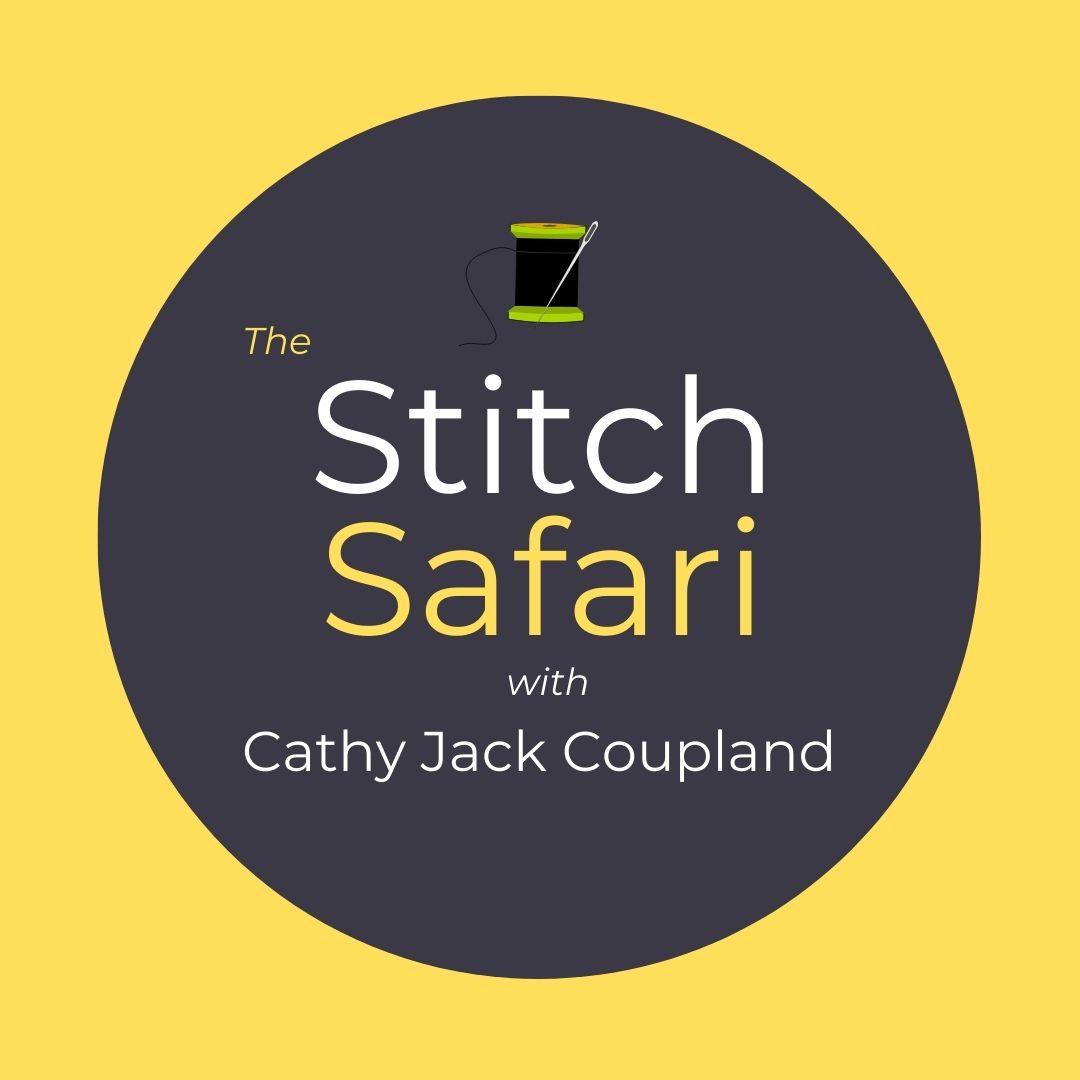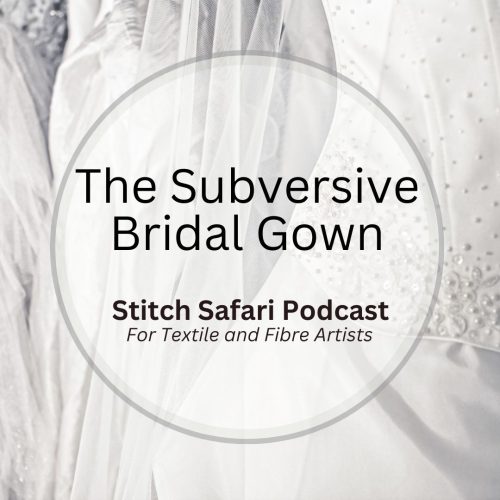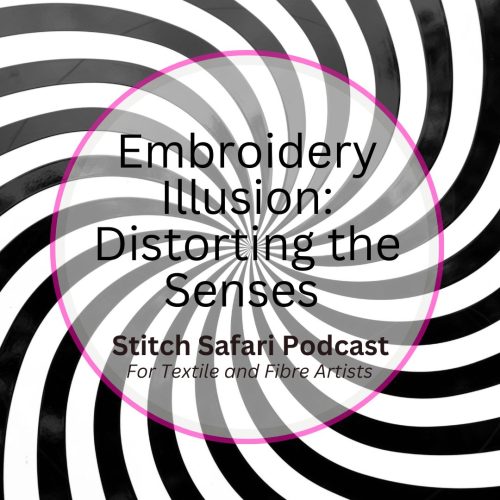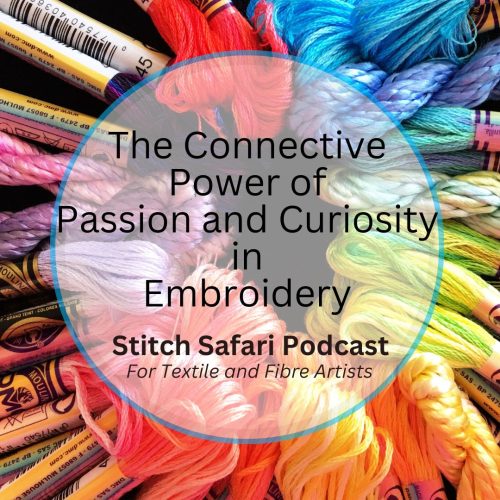‘Every accomplishment starts with the decision to try.’ John F. Kennedy
We know prehistoric man gave rise to the development of a simple implement that was truly life-changing and of world-wide significance. Something small, easily transportable, but a tool that well and truly made its mark globally and historically.
The simple needle is part of our history, traversing continents, and oceans, but this diminutive and adventurous tool gave rise to not only utilitarian garment construction, but also embraced surface decoration and embellishment, or, in other words, embroidery – introducing the art of the needle.
In 2013, Robert Horvat wrote in his article ‘Bone Sewing Needles (a brief history of) ‘Our modern sewing needle is the direct descendent of the flint or bone needle (awls) used by humans thousands of years ago. The first needles would have likely been made by using a flint tool. Splinters of bone would have been cut out and trimmed roughly into a pointed shape. The Crude needle was probably then polished smooth with sand, water, and a soft stone rubber. Finally, the needle’s eye would have been created with a rudimentary stone drill.’
‘What would life be if we had no courage to attempt anything.’ Vincent van Gogh
Over time, needles became more specialised. Previously made from a variety of hard substances such as bone, shell, fish-bones, thorns, and wood, with the eventual introduction of metals such as copper, gold, iron, silver.
Ancient Egyptians used fine needles made from fish-bones, bronze, copper, and silver, some of which were pointed at both ends, but with an eye at one end only. Their dedication to tomb paintings depicts the use of decorative stitch on their couch covers, hangings, and tents. The Romans also used straight needles of bronze and iron, but it’s not until around 3,500 years ago, that sacred Hindu medical texts mention both straight and curved needles made from high-quality steel. This suggests to me a deep understanding of tool-making to suit the task and a curved needle certainly fits that purpose.
Surviving examples of embroidery are rare, but we do find renderings of decorative embroidery recorded in the art of these ancient peoples. Depictions of beautifully embroidered garments can be found in paintings, and pottery leaving us with an evocative historical road-map for the reach and application of needle-art.
‘To be ignorant of the past is to be forever a child.’ Cicero
The writing of Ghazali, a Persian theologian, writing around 1100 CE, records the 25 stages of work required to make a needle. I reference this here because needles were considered a precious commodity and were relatively costly. Like cloth, they were a revered possession and were looked after with great care.
Needle making continued to become more and more specialised through the formation of Guilds, with a German Guild of Needle makers dating as far back as the 14th century. Medieval England also sees the formation of professional embroidery workshops and guilds, and their work, known as ‘Opus Anglicanum,’ or English work, became famous throughout Europe.
Needle making was a secret art, closely-held by Islamic needle makers, and when Spanish workers eventually inherited these secrets, they took this knowledge with them when they fled to Germany, France, and then onto England.
‘You can never cross the ocean until you have the courage to lose sight of the shore.’ Christopher Columbus
At one stage, in the London of Henry VIII, only one Spanish needle-maker was making needles from his own steel wire, the basis of needle-making. Other Masters were importing wire from Germany and Spain, but this was to change and by the end of the 19th century, England was producing up to 90% of the world’s needles. These were used not only for clothing and fashion but also in the medical, clock-making, and goldsmithing trades. A system for mechanised needle making was developed in the 18th century. Little has changed to this day.
As the 19th century saw higher incomes, along with a diversity of new textiles and the sewing machine, needles became cheap. This was a time when gold plating was added to some needles to define the eye, along with a variety of styles of needles designed specially to suit various techniques.
The sewing needle has an amalgamated worldwide history of utilitarian, evermore complex garment construction and embroidery as surface decoration, beading, applique, patchwork, and quilting, migrating from Ancient Persia to India, China, Japan, Byzantium, and Medieval and Baroque Europe. Each era, each society or each tribe left a footprint, some of which has been passed down generationally, added on to over time, or adapted to suit their needs. That’s the beauty of needle art.
‘Imagination is more important than knowledge. Knowledge is limited. Imagination encircles the world.’ Albert Einstein
One small tool has quietly, yet determinedly stretched across time and history. We may not see many images of the humble needle in paintings, manuscripts, or inscribed on the sides of pottery, but we do see what can be achieved with its use and a little imagination.




